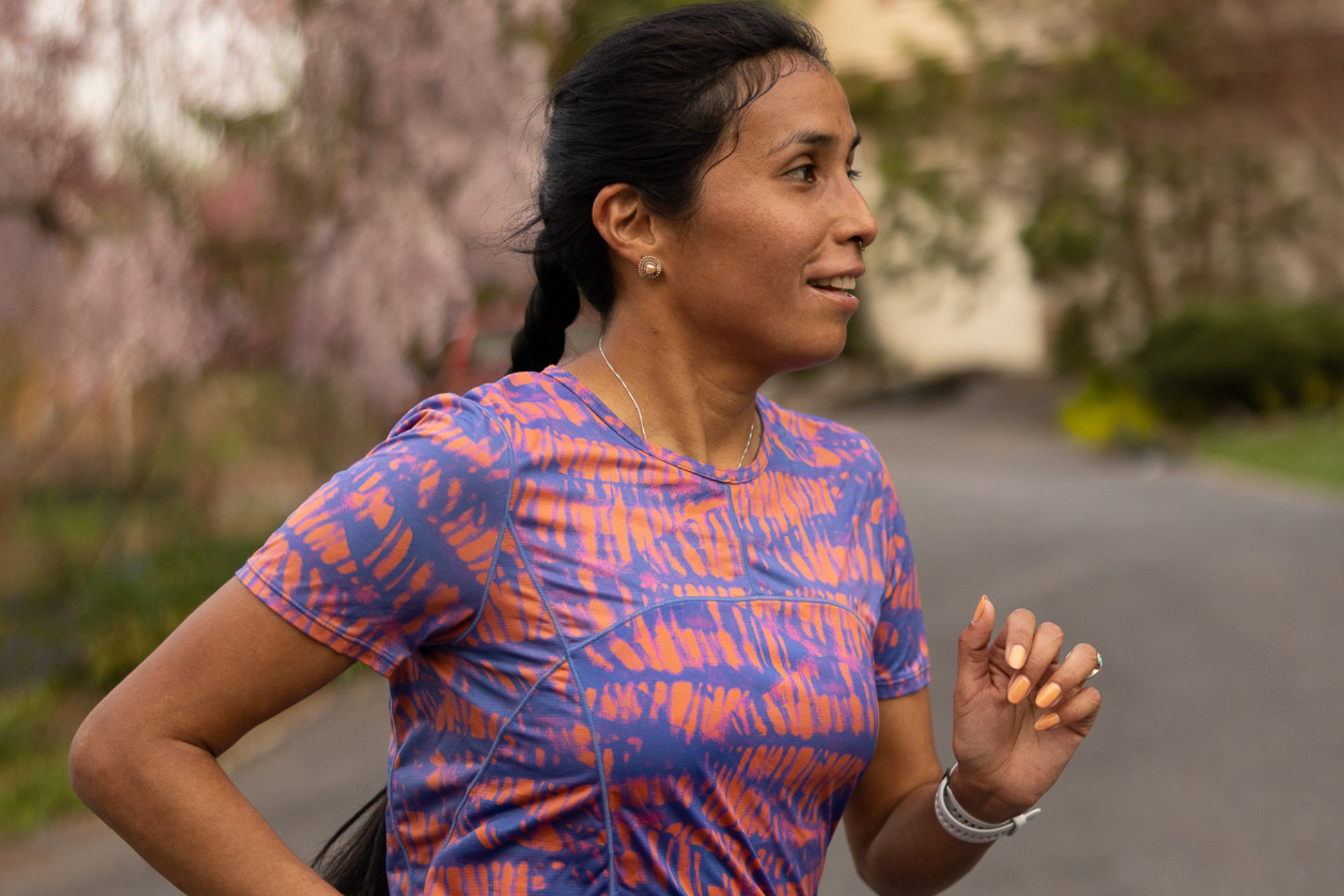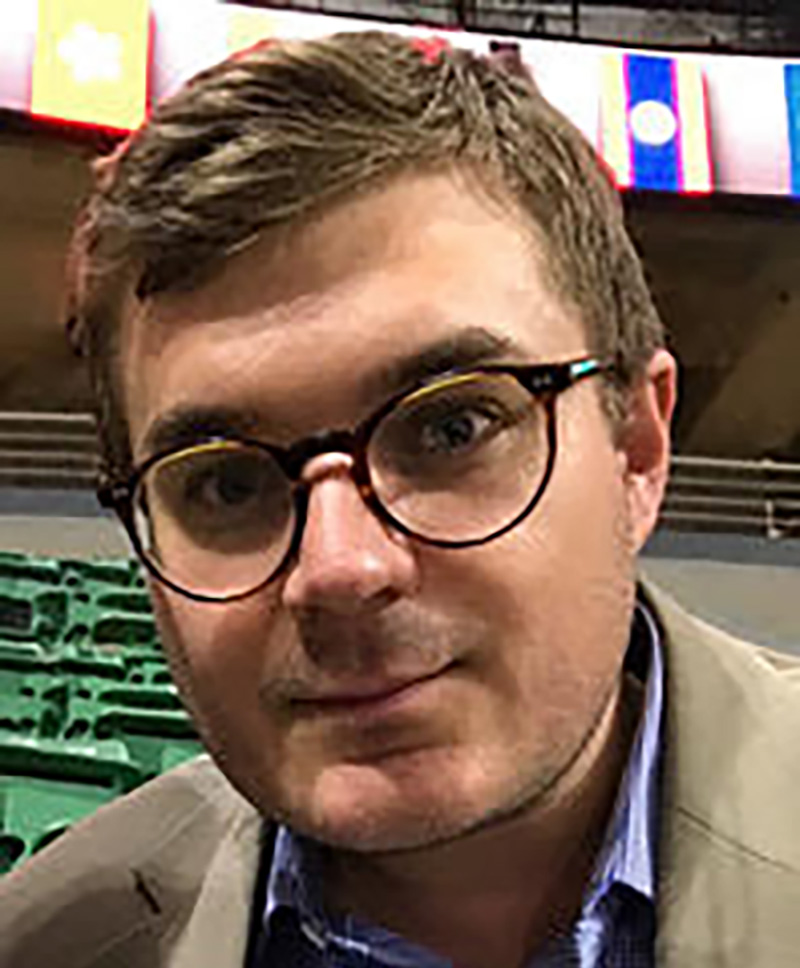
- Details
- By Ben Pryor
Excitement and anticipation are building for the upcoming 127th Boston Marathon, taking place on April 17 on the hilly homelands of the Massachusett and the Nipmuc people.
This year’s event will mark the return of fourth-generation runner Jordan Marie Brings Three White Horses Whetstone (Lakota). Whetstone is a professional runner, activist, and filmmaker who has used her platform to call attention to Indigenous issues.
“Boston’s definitely my favorite race and course,” Whetstone told Native News Online. “I’m excited to be back in and around that community running again. I’m excited to meet other Indigenous runners that will be there and others from the community groups that are based in the area and getting to know the community."
In 2016, Whetstone founded Rising Hearts, a grassroots Indigenous-led organization that promotes healthy living on Native lands and works to increase access to the outdoors. The nonprofit promotes racial, social, climate, and economic justice while creating a space for Indigenous voices to decolonize wellness.
In addition, Whetstone was a panelist for the “Indigenous Runners through History at the Boston Marathon: Past, Present, and Future” on April 14. The panel focused on the contributions of Indigenous runners to the Boston Marathon and the challenges faced along the way. The panel was moderated by Rising Hearts athlete Kelsey Long (Navajo) and included Patti Dillon (Mi’kmaq), Larry Spotted Crow Mann (Nipmuc), and Samuel Burgess (Mi’kmaq).
“Indigenous runners have a living heritage that is intertwined with Boston Marathon history,” said Suzanne Walmsley, Director of Youth and Community Engagement Boston Athletic Association. “Each of the panelists embodies that history and carries it forward today. The Boston Athletic Association is excited to bring together individuals who will speak to that heritage and honor the contributions of Indigenous peoples to the Boston Marathon.”
Using running as a tool, she has forged a unique way to connect advocacy with her passion for running. The Boston Marathon provides a platform to raise awareness about the issue of missing and murdered Indigenous peoples while also fundraising to amplify Indigenous voices and visibility.
We Are All Related: Kinships from Coast to Coast
Whetstone and many runners will fuel themselves with GU Energy Gels during the marathon. In fact, Rising Hearts and GU recently announced a new kinship.
GU Gives is the philanthropic arm of the sports nutrition brand. It recently introduced a new energy gel flavor, Raspberry Lemonade, to “uplift underserved and underrepresented communities.” Ten percent of the profits from the sales of the flavor will directly benefit Rising Hearts.
The gel packet bears the motto, “Be a Good Relative,” which reflects Rising Hearts’ belief in community building and the process of creating a thriving future for the next generation. The product packaging also showcases original artwork by Indigenous artist and muralist Yatika Starr Fields (Osage, Muscogee, and Cherokee).
“We’re really excited about this,” Whetstone said. “As part of this partnership, it allowed us to create a new flavor of raspberry lemonade, which premiered and launched on March 1. They wanted to help bring awareness to our Running on Native Lands Initiative and help support our work in the running and outdoor industries. They wanted to support the athletes with complimentary entries and travel stipends for when they participate in these events that we can connect them with.”
Whetstone says the partnership between Rising Hearts and GU is a powerful example of what can be achieved when two organizations come together to promote access to the outdoors, healthy living and community building.
Celia Camargo, Director of Community and Purpose at GU Energy Labs, said the response to the new flavor has been “overwhelmingly positive,” and is the most popular Energy Gel flavor in almost a decade, with the initial stock selling out in one month and GU increasing production to meet demand.
“We talk a lot about protecting the places we play, and now it’s time to take a step back to think about ‘What are these places that we’re recreating on?’” Camargo said. “Rising Hearts promotes the idea of ‘running with the land’ and ‘being a good relative’ to build a deeper connection with the land and the Indigenous caretakers of the lands, and to ensure a better future not just for the next generation, but for the planet.”
Running on Native Lands is essential to creating a more equitable and just world for Indigenous peoples, Whetstone explained.
“Hopefully, it’s that starting question of, ‘If we weren’t including Indigenous peoples’ history and knowledge in our race events, who else are we not including in these conversations?’,” Whetstone said. “Hopefully, it spreads so we’re making the running and outdoor communities a more equitable place.”
Marathon Blessings
Clyde J.R. Estes, Chairman of the Lower Brule Sioux Tribe, expressed pride in Whetstone’s work. He commends her tireless efforts to raise awareness of many Native American issues that affect everyone, along with her dedication and determination to advocate nationally.
“We here at the Kul Wicasa Oyate (Lower Brule Sioux Tribe) are very proud of our fellow tribal member Ms. Jordan Whetstone,” Estes said. “We applaud all the work she does to bring awareness to the many Native American issues that affect all of us but also her dedication and determination that she does advocating on a national level.”
Estes also commented on how Whetstone’s advocacy for Native Americans extends beyond raising awareness of Indigenous issues and how her commitment to maintaining her physical and spiritual health through running embodies the perseverance and resilience of tribal values.
“The running she does to keep her spirit healthy and the inspiration she is giving to all her fellow tribal members and, most importantly, to all the Native American females to follow their dreams and to keep standing up for what they believe in,” said Estes.
More Stories Like This
Zuni Youth Enrichment Project and Partners at Ho’n A:wan Productions Launch 8th Annual Delapna:we ProjectChickasaw Holiday Art Market Returns to Sulphur on Dec. 6
Center for Native Futures Hosts Third Mound Summit on Contemporary Native Arts
Filmmakers Defend ‘You’re No Indian’ After Demand to Halt Screenings
A Native American Heritage Month Playlist You Can Listen to All Year Long
Help us defend tribal sovereignty.
At Native News Online, our mission is rooted in telling the stories that strengthen sovereignty and uplift Indigenous voices — not just at year’s end, but every single day.
Because of your generosity last year, we were able to keep our reporters on the ground in tribal communities, at national gatherings and in the halls of Congress — covering the issues that matter most to Indian Country: sovereignty, culture, education, health and economic opportunity.
That support sustained us through a tough year in 2025. Now, as we look to the year ahead, we need your help right now to ensure warrior journalism remains strong — reporting that defends tribal sovereignty, amplifies Native truth, and holds power accountable.
 The stakes couldn't be higher. Your support keeps Native voices heard, Native stories told and Native sovereignty defended.
The stakes couldn't be higher. Your support keeps Native voices heard, Native stories told and Native sovereignty defended.
Stand with Warrior Journalism today.
Levi Rickert (Potawatomi), Editor & Publisher


